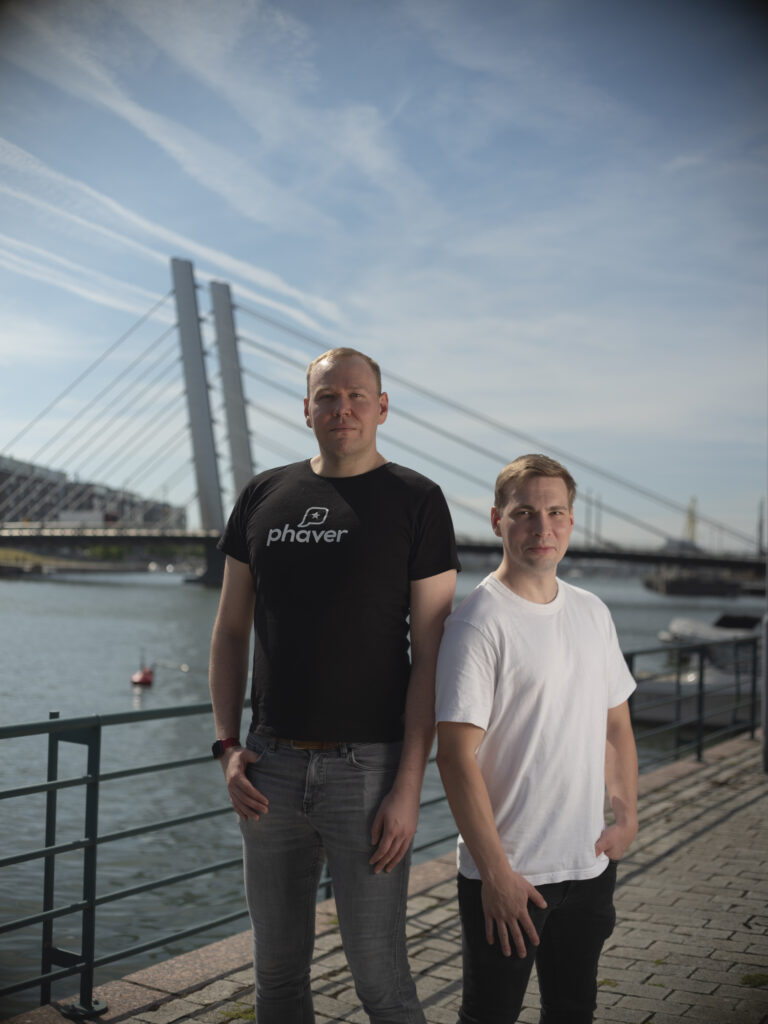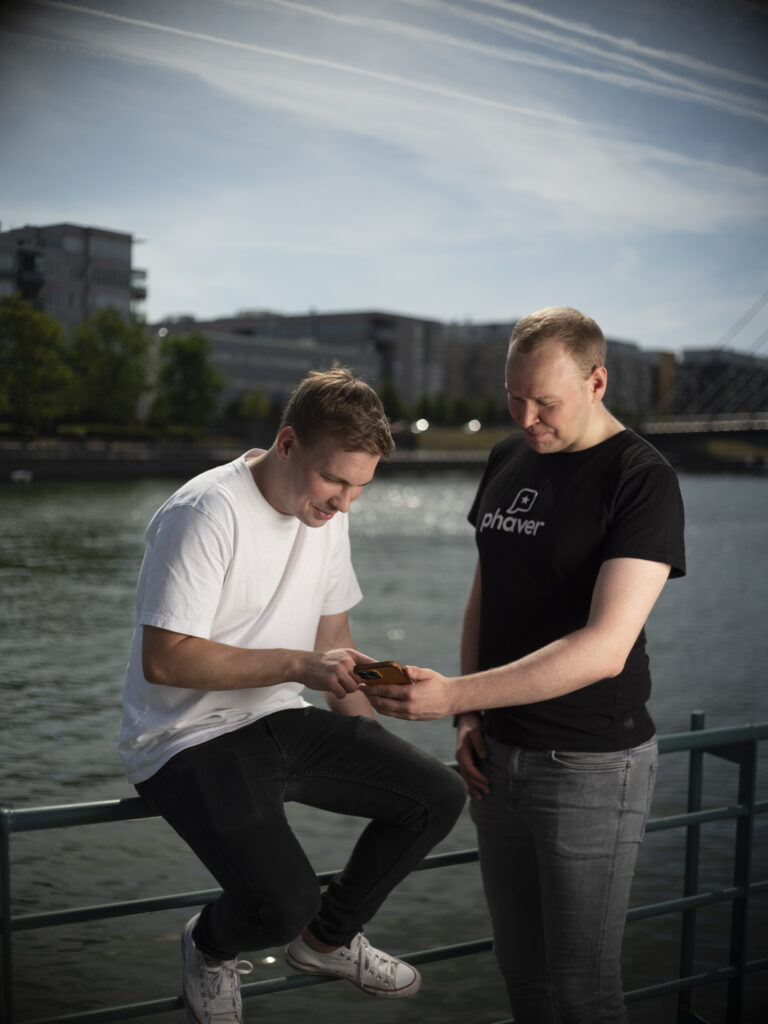Joonatan Lintala and Tomi Fyrqvist quit their well-paid jobs to work on a new type of social media. They believe that ownership of the posted content should belong to users. But are users themselves ready for that?
TechBullion: What inspired you to start your own social media? A couple of years ago VCs were laughing at those who want to create a “new Facebook”. But today, it doesn’t seem to be something super-crazy, as we entered the Web3 age. Did you foresee this?
Joonatan Lintala:
The last generation of social started innocently enough to connect people and allow them to share their life and content, but somewhere along the way it evolved into a machine where we are the product. To connect with your friends online or DM anyone you have to accept the corporations not only to scan every message we write but also to track which websites we visit, what products we look at, and even whether our phone’s GPS shows we visited a certain store.
While more targeted advertising as such is not always a bad thing, somehow this model also evolved in a way where users create all the content and value but still, all the profits flow to the giant corporations running the platforms. Furthermore, your entire online life is in their hands and even if you somehow managed to monetize your audience, it’s not actually yours. At any given moment your entire social history can be wiped out for one wrong tweet or story since none of that belonged to you in the first place.
After working at Google and closely with Facebook and Instagram for years, I always had this nagging feeling that I might be actually making the world worse. The final straw came when my grandmother called me one day, upset that one mistaken click in her settings had gotten her removed from Facebook and Instagram for being underage. Multiple useless appeals later I had to help her create a new account and start from scratch, over a decade of connections, memories, and discussions were wiped out forever as she never actually owned them.
Realizing Web3 has the potential to solve all these issues, I teamed up with a former Goldman Sachs investment banker Tomi Fyrqvist, similarly set to make amends and build something with a genuinely positive impact on the world. After multiple iterations, we arrived at the current version of Phaver, a social app where users share the profits through a multi-sided token economy, while our partner, Lens Protocol, provides users NFT-based profiles for genuine ownership and interoperability across a wide network of future social apps.
TechBullion: Could you talk about your career before Phaver?
Tomi Fyrqvist: After graduating from business school more than 10 years ago, my path evolved from finance to venture capital to Web 2 tech. I spent several years in investment banking at Goldman Sachs, then in an investor role, and finally at Alibaba in a management team position. We kicked off Phaver on the ambitious mission to solve issues related to social media and to fix its current heavily tilted value accrual. Since 2015 I had started studying and had been fascinated by the emerging and mostly untapped potential of public blockchains – and how I see ultimate those shaping up the architecture of the internet.
Joonatan Lintala: I’ve spent most of my career in the frontline of web2 social, working at Google with products like Google+ and YouTube and later scaling up a Facebook and Instagram marketing platform to global market leadership. Having worked with the world’s leading advertisers on multiple continents I’ve had a frontline view to how the sausage is being made, and it’s definitely not always pretty from a user’s privacy perspective. An entrepreneur at heart, I’d founded three smaller businesses before even graduating from business school, but Phaver is my first “real” startup. I’m super excited about our great team of 15 and the tens of thousands of users we’re put together so far.
TechBullion: Why do you think people will use Phaver instead of traditional social media? It is quite hard to change patterns and make people use a new social media platform.
Joonatan Lintala: It is indeed, people are creatures of habit and the web2 platforms are guarding their audiences very tightly. That being said, apps like TikTok and BeReal became almost overnight trends in a market that was supposedly saturated, and there’s always an early adopter audience willing to try something new. In crypto that’s more obvious than anywhere else, as everyone knows the scene is just getting started and, unlike Web2, being early in a project can really pay off when the tokens reach larger audiences, just imagine if Facebook had given stock to all of its earliest users, they’d have far more than bragging rights and a short username today.
Phaver’s plan is to reach the first “atomic network” among the crypto enthusiasts and our closed invite-code gated beta has already more than 50k users where an average user in July spent more than 5 hours on Phaver, so this early audience is also quite engaged, as they realize that being active early and earning tokens can lead to a massive upside, but only if they help us get there. This also means our community is massively helpful, onboarding each other in numerous languages in our Discord and giving tons of useful feedback every day.
Next, we shift our focus to the most influential people, the KOLs or Key Opinion Leaders in the Web3 space who are somewhat reluctantly using Twitter right now, while often facing shadowbans and even outright removals just for posting crypto-related content. Eventually, there’s a large enough mass of crypto users to start shifting our focus on the mainstream audience, who need more education but can equally genuinely benefit from a more ethically built social app.
As an added Web3 perk, using the interoperable Lens Protocol developed by the DeFi platform Aave, means we enjoy the network effects of the entire protocol so each new user in any Lens app joins also the social graph on Phaver and users can communicate seamlessly across all the apps. We love the Lens philosophy of tearing down the walled gardens to create one communal one where we grow together.
TechBullion: How do you plan to monetize and create value for users without an invasive advertising model?
Tomi Fyrqvist: Brands can still advertise on Phaver, but they do so on the community’s terms. Posts are made into topics ranging from NFTs to sneakers, allowing many brands to reach a relevant audience inside them without invasive user profiling. To get additional visibility, both brands and users can stake their own posts. This mechanism creates additional demand for the Phaver tokens while also allowing high-quality posts to earn part of the tokens back from users staking them. Similarly, they get reduced visibility for downvotes, allowing a community-governed Adwords-like quality score that incentivizes high quality and rewards the token-holding active users by increasing token demand and value.
Furthermore, users can spend their tokens on perks like gated premium content or even opting out of the above-mentioned ads entirely. A well-built in-app economy can ensure the proceeds are distributed fairly among the creators, curators, and moderators that make the app work, not just making Wall Street more money.
TechBullion: What obstacles did you face along the way?
Joonatan Lintala: Initially, Phaver tried a Web2 solution geared towards recommending products and services, but quite soon realized there are much more critical issues to solve in the entire social space that requires a Web3 approach. This is also a tough space to build in since the regulatory and infrastructure environment is still being formed and there are very few precedents. On the other hand, this is exactly the time and place to be in to help make Web3 a reality.
TechBullion: What separates you from your competition?
Joonatan Lintala: We’re the first native mobile app on the Lens and, according to many, the most enjoyable user experience too. This has lead to our users already making up a majority of the content on the protocol and the numbers keep growing stably with over 20k active users returning each week. We believe that keeping our focus always on the user and reacting quickly to the learnings we can keep our trajectory and accelerate it fast enough to reach a prominent position in a market that is yet to be claimed by anyone, the user-owned era of social.
TechBullion: What motivated you the most right now?
Joonatan Lintala: There is a massive opportunity in Web3 to make the next generation of social a lot more ethical and also help millions of metaverse workers around the world to finally get paid for the work they do in creating, curating and moderating content, which previously has been only rewarded with karma or likes. The great feedback from our active community members also keeps us going even when there are more challenging days.
Tomi Fyrqvist: We view the power of web3 the same way as some of the greatest thinkers of our time like Naval Ravikant where it is an insane concept where we move from “closed code, corporations own the platform and users are the data” to “open code, contributors own the platform and users own their data” – and specifically we think that the social vertical can supercharge this adoption as the utility is easier to understand – claiming one’s profile, following a few friends and collecting a POAP from the event – vs. logging to a complex exchange or DeFi platform and buying and staking tokens.































